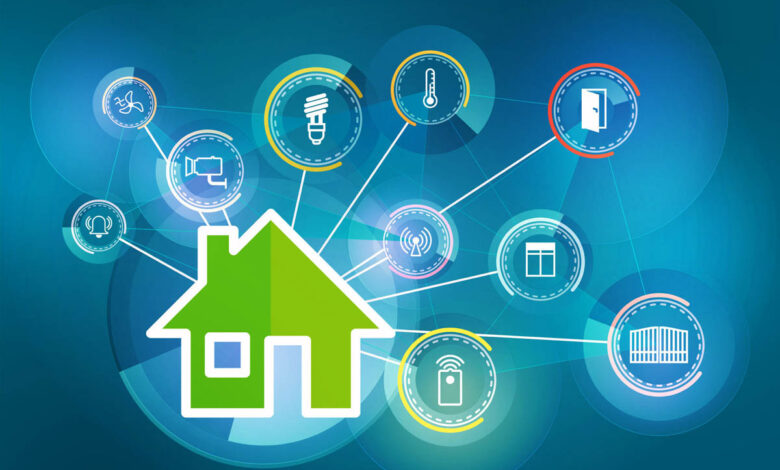Why the Line Between Home Automation and Security Is Blurring

People looking to buy a home security system 20 years ago had very clear choices. Home security systems consisted of door sensors, window sensors, and CCTV cameras. Everything was connected to a central hub which, in turn, was connected to a monitoring center via phone lines. Today, it is not so simple. Home automation has seen to that.
Even in the early years of home automation, there was a clean line of delineation between automation and security technologies. But that line is getting blurry. It is no longer so easy to invest in one or the other. Home security and automation have become so integrated that some service providers make no attempt to separate them.
No Longer Just Alarm Systems

The security front is a good place to start in the search to understand why the line between home automation and security is blurring. Consider the wired security systems of old. They were little more than alarm systems that only accomplished something after-the-fact.
An old-school alarm system did one of two things. It either made noise or it alerted someone in a remote monitoring center. If you are willing to pay for it, you can install a system with both functions. Yet the systems were reactive in nature. In other words, they only responded after someone tried to force entry into your home.
Reacting after-the-fact is better than not reacting at all, but wouldn’t it be better to prevent the intrusion from ever happening? Step in modern home security. Thanks to technology, homeowners have access to devices that actually deter crime – devices like wireless video cameras and video doorbells with two-way audio.
Technology Causes the Overlap

This modern technology is that which causes the overlap between home security and automation. It must be understood that the modern definition of home automation is not limited to automating tasks. The definition also includes access and control.
Remember the analog timing devices we used to control our lights back in the 70s and 80s? They were pretty simple:
- Set the time on the dial
- Plug the light into the timer, and the timer into a wall socket
- The light would turn on and off as the dial rotated with the time.
Those timers represented an early implementation of home automation. Yet they were limited in their functionality. First, the devices could only do one thing: turn the power on or off. That’s it. Second, they were isolated devices in the sense that they did not work in conjunction with other devices.
The biggest difference, however, is the fact that those old devices could only be manipulated by hand. You had to physically hold one in your hand to set the time. Today’s home automation devices are not subject to the same limitations. You can control them remotely with an internet connection and a mobile device.
An Endless Number of Devices

The most interesting aspect of modern home automation is the sheer number of devices that can be automated. It is almost limitless, depending on what you want to accomplish. Virtually any device that runs on your home’s electrical system can be automated to some degree.
Here are just some of the things people are automating these days:
- Electronic door locks
- Thermostat control
- Window blinds
- Home entertainment systems
- Interior and exterior lighting
- Exterior irrigation systems
- Wireless video cameras.
If you have noticed, there are two items on this list that pertain to home security as well as home automation. They are the electronic door lock and the wireless video camera. Both offer home automation as well as security benefits. They are crossover devices, of sorts.
The Smart Lock Has Arrived

Vivint Smart Home is just one company that sells electronic door locks. But their locks are more than just locks that utilize electricity to open and close. They are smart locks. What does that mean? It means that they can be programmed and controlled remotely.
A smart lock is a keyless lock. Access is gained through a keypad and numeric code. However, a smart lock can also be controlled with a mobile device and companion app. As such, you do not even need to be home to lock and unlock your door.
This has both home automation and security benefits. On the automation front, you can remotely unlock your door to allow access to out-of-town guests who arrive before you get home from work. You can do the same thing for your kids so that they do not have to carry keys around. No such luck with a standard keyed lock.
From a security standpoint, you never have to worry about leaving home and forgetting to lock the door. Today’s smart locks can be programmed automatically to lock themselves after a set amount of time. And even those that cannot automatically lock can still be checked from anywhere. If you find you forgot to lock the door, a swipe of your smartphone takes care of it.
All-In-One Systems

The availability of so many connected devices makes it quite feasible for companies like Vivint to sell all-in-one systems. As a consumer, you do not have to choose between home security and home automation. You can now get everything you want in a single package.
The beautiful thing is that even entry-level packages offer a smattering of both. You get video cameras and window and door sensors for entry-level security. For home automation, you get a smart thermostat and smart lighting devices.
Some companies let you buy individual devices off the shelf. Take the video doorbell, for example. It is one of the more prolific standalone home automation devices currently on the market. Anyone with a bit of tech-savvy can use devices like this to build a custom system piecemeal.
The once clear line between home security and automation is not so clear anymore. That line is blurring thanks to improved technology and a larger number of automation options. And now you know.



